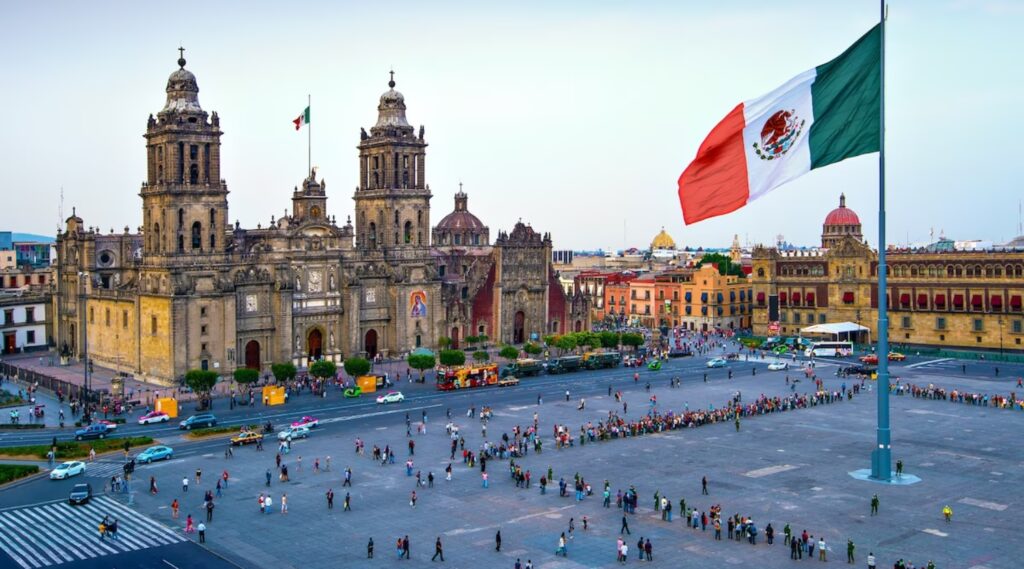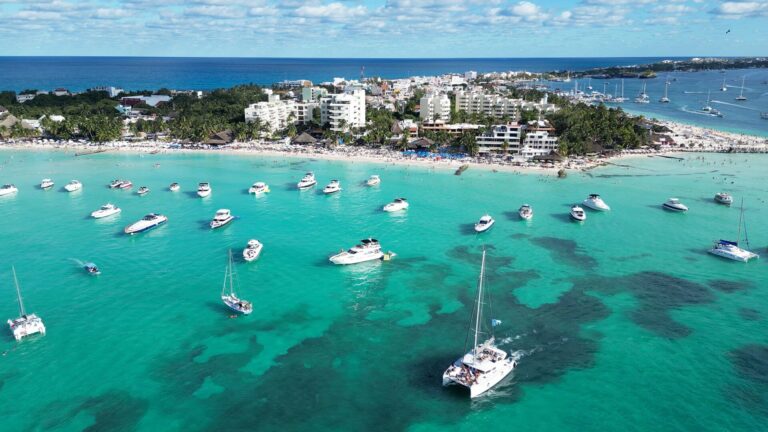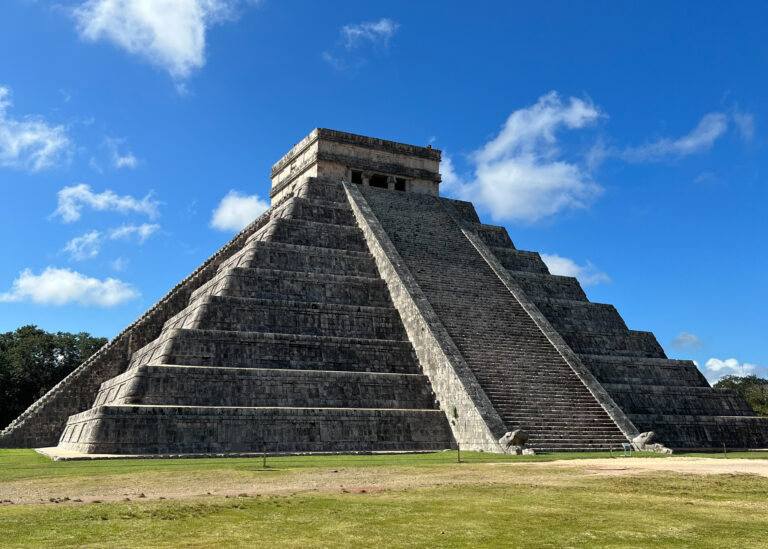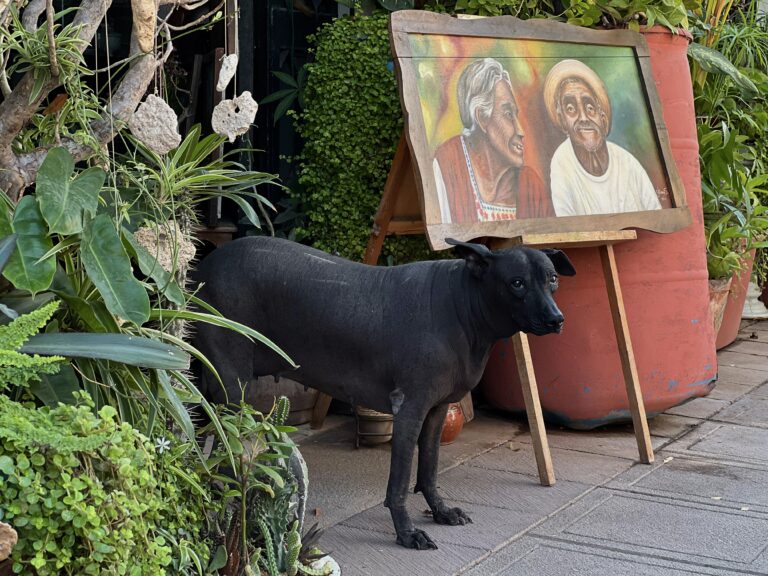Mexico is a captivating country with a rich history, vibrant culture, and breath-taking landscapes. The Spanish conquistadors left their mark, but the indigenous people held onto their ancient traditions, creating a unique blend of cultures that makes Mexico truly special. We fell in love with its charm and diversity, and now we call it home! In this article, we’ll share some interesting and fun facts about Mexico.
1. The official name of the country is not Mexico!
The official name of Mexico is Estados Unidos Mexicanos, which translates to the United Mexican States.
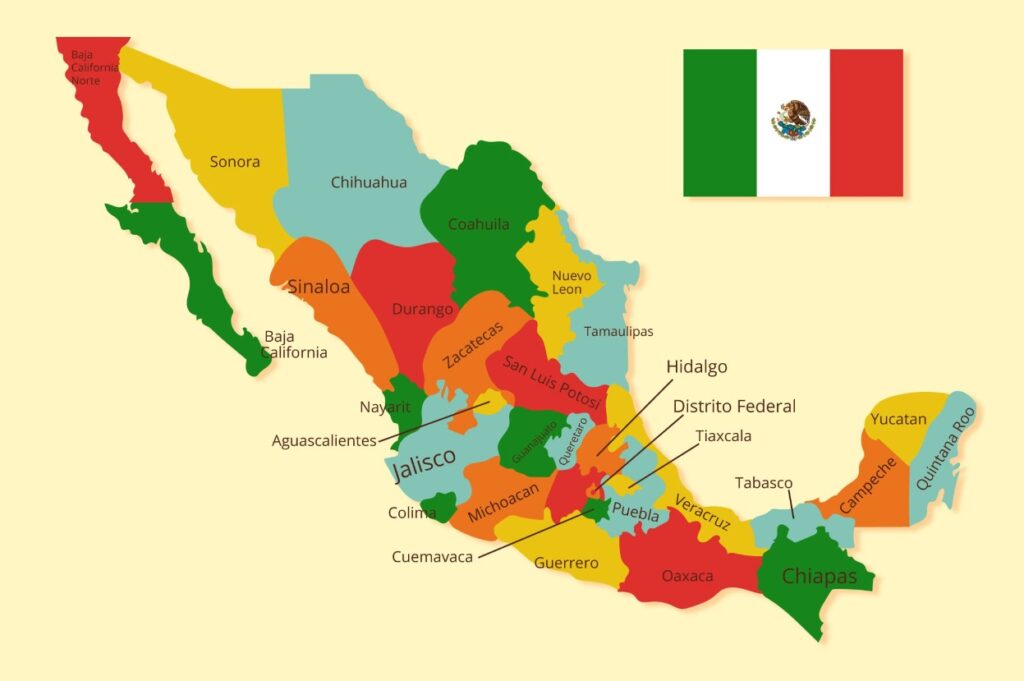
2. Mexico comprises 31 states and Mexico City.
Mexico City, the capital, holds a special status as both the capital and an independent administrative unit, similar to Washington, D.C. in the U.S. Just like in the U.S., each of Mexico’s states boasts its own unique culture, traditions, and even laws.
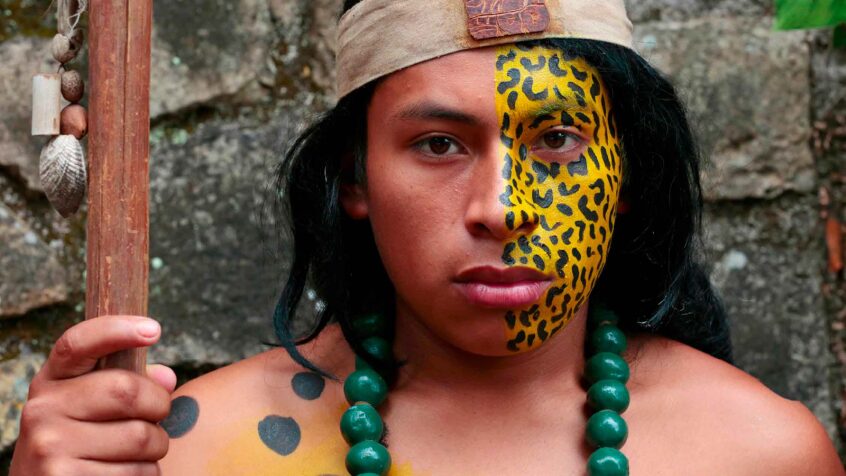
3. Mexico has no stated official language.
Another interesting fact about Mexico is that Spanish is not even its official language. Mexico stands out for its incredible linguistic diversity, with no single official language. This makes Mexico one of the countries with the richest linguistic variety in the Americas. While most Mexicans speak Spanish (specifically, Mexican Spanish), the country has 68 other officially recognized national languages (and around 250 dialects) – such as Mayan, Aztec Nahuatl, Mixtec, Otomi, and others.
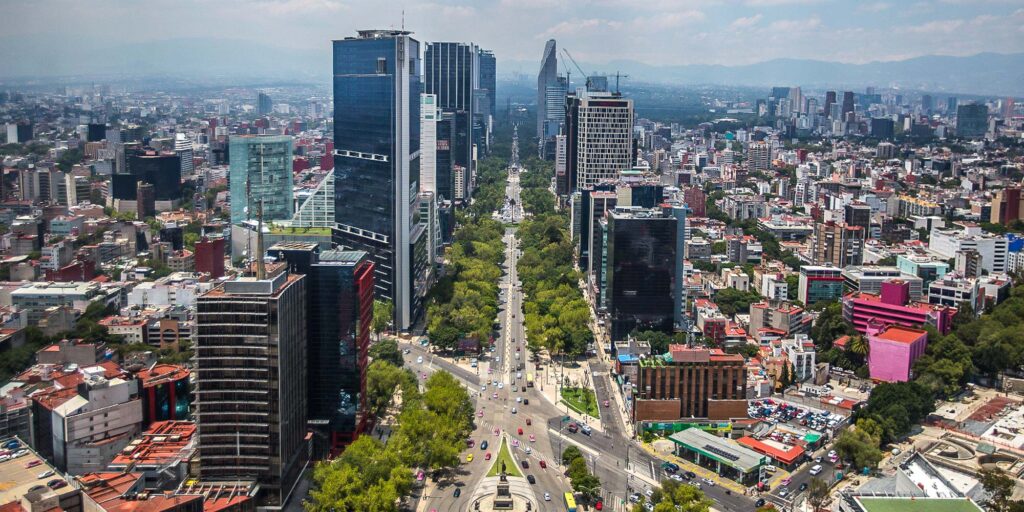
4. Mexico City was built on a lake – and it’s sinking!
One of the most fascinating yet unsettling facts about Mexico City is that it’s slowly sinking. The area where the city now stands was once the majestic Aztec capital of Tenochtitlan, built on Lake Texcoco. After the Spanish conquest in 1521, they rebuilt the city in their own image, laying the foundation for what would become New Spain and, eventually, in 1821, the capital of independent Mexico.
But that foundation wasn’t the most stable. Lake Texcoco has largely dried up, and the city is now sinking at an alarming rate of about 12 cm per year – that’s significantly faster than the Italian city of Venice, which is sinking at about 2 mm per year. Some buildings are already tilting, a visible reminder of the city’s precarious position. This is an interesting, and yet disturbing fact about Mexico’s capital.
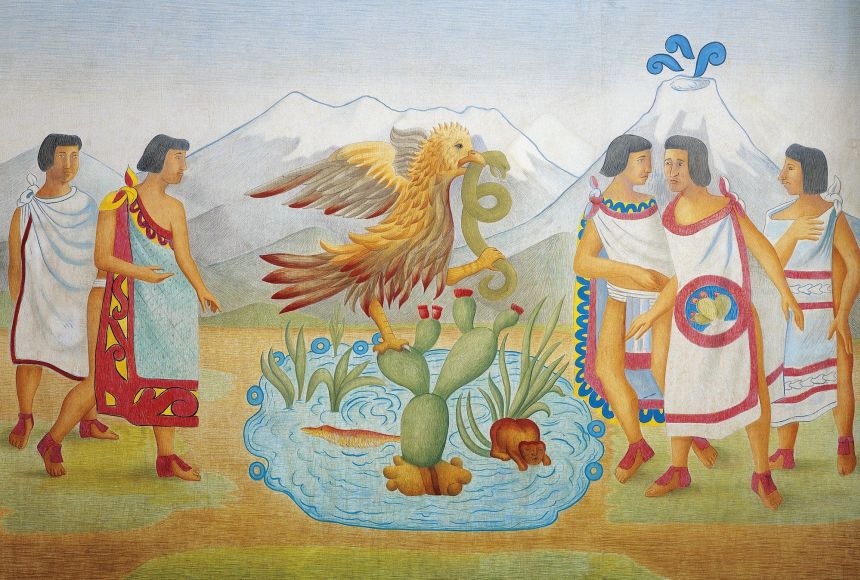
5. How the Aztecs founded Tenochtitlan (which is now Mexico City).
In their quest to find the perfect location for their capital, Aztec priests received divine guidance from the god Huitzilopochtli: they were to establish their city where they witnessed an eagle perched on a cactus, devouring a serpent. And so it was, on an island in the vast Lake Texcoco, that the Aztecs beheld this very sight. Consequently, recognizing it as a sign from the gods, they founded their city-state, Tenochtitlan, meaning “house of the cactus rock.” Starting with a few islands, they ingeniously expanded their territory using chinampas, artificial floating gardens, a remarkable feat of Mesoamerican engineering.
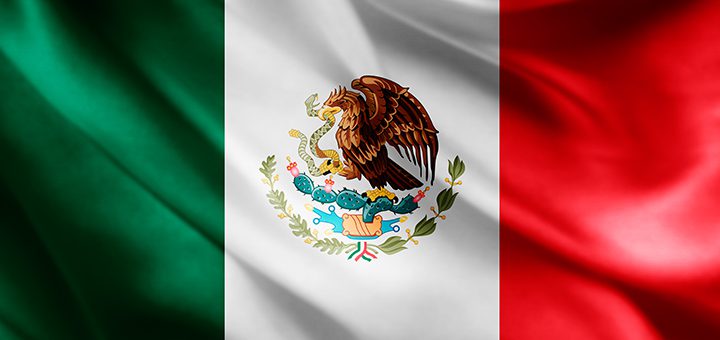
6. The national symbol of Mexico is the majestic golden eagle.
This powerful bird, known scientifically as Aquila chrysaetos, holds a special place in Mexican culture. The Mexican flag proudly displays its image at the center, depicting the golden eagle perched on a prickly pear cactus (nopal) with a snake in its beak, just as the legend foretold.
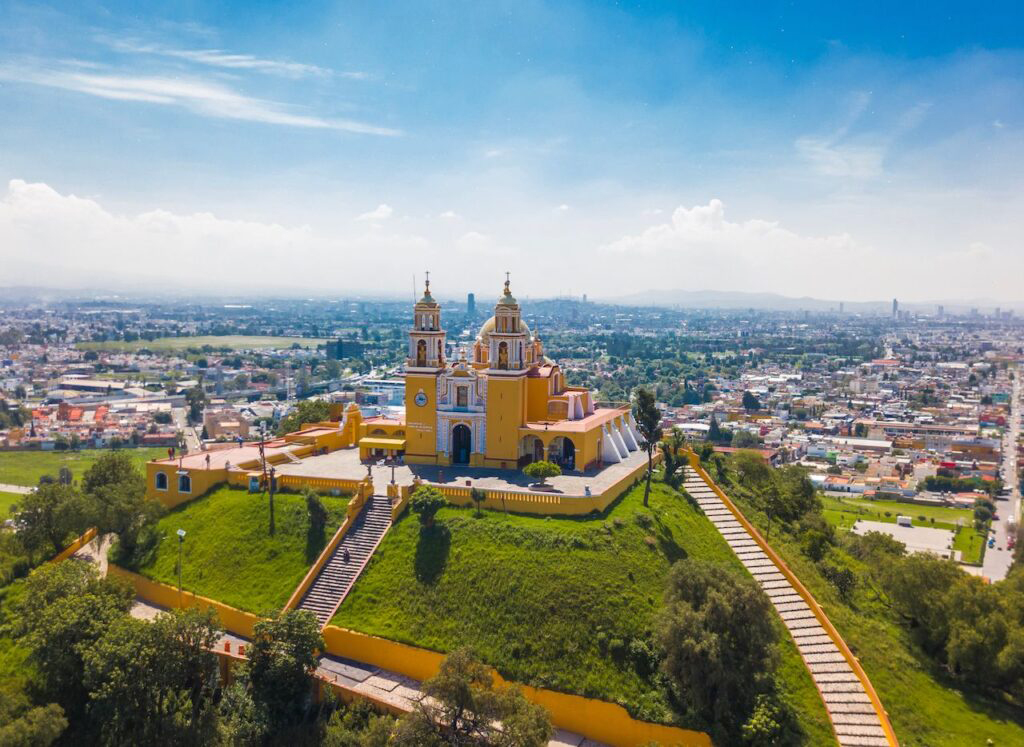
7. Mexico boasts the world’s largest pyramid.
Not in height, but in sheer volume, the Great Pyramid of Cholula reigns supreme. Also known as Tlachihualtepetl, meaning “man-made mountain” in Nahuatl, this colossal structure is mostly hidden beneath the earth. When the Spanish arrived, they built the Church of Our Lady of Remedies (Nuestra Señora de los Remedios) directly atop it, obscuring the pyramid from view. Believed to be dedicated to the Aztec god Quetzalcoatl, the Feathered Serpent, this awe-inspiring pyramid stands 216 feet (66 meters) tall with a massive base of 492 by 492 yards (450 by 450 meters), encompassing a staggering 159 million cubic feet (4.5 million cubic meters)! Who would have thought that Mexico has a bigger pyramid than Egypt? There’s another interesting fact about Mexico to impress your friends.
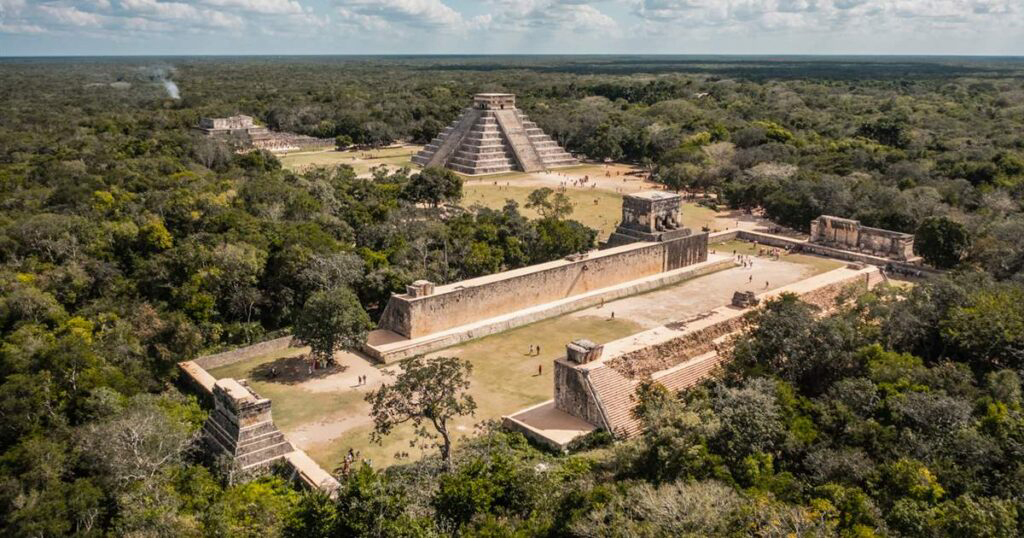
8. Mexico is home to over 30 ancient pyramids.
Beyond the impressive Great Pyramid of Cholula, Mexico boasts a wealth of other ancient pyramids. The oldest among them is the Great Pyramid at La Venta, the heart of the Olmec civilization in Tabasco, constructed around 900 BC. Perhaps the most renowned is the Pyramid of Kukulcan (the Mayan name for the Feathered Serpent god) in the Mayan city of Chichen Itza, now recognized as one of the New Seven Wonders of the World.
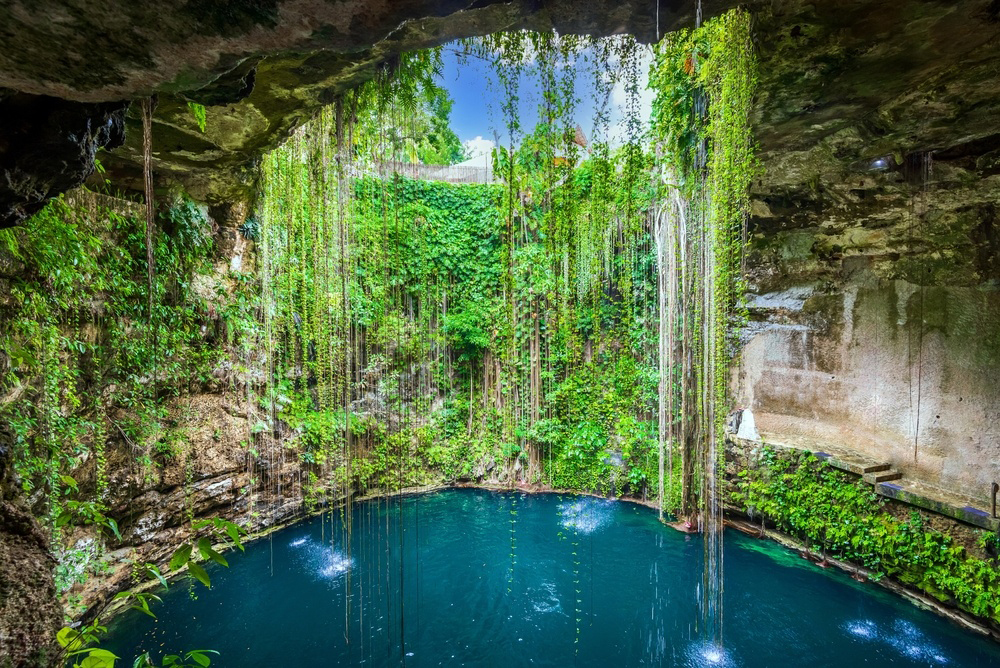
9. Mexico is a world leader in cenotes.
With around 6,000 of these stunning natural wonders, mostly concentrated on the Yucatan Peninsula, Mexico boasts the largest number of cenotes in the world. These mesmerizing sinkholes, formed by the collapse of limestone bedrock, reveal crystal-clear pools and underground rivers, creating a breathtaking spectacle. All of them are interconnected, forming part of the largest underwater cave system on Earth. Indeed, thanks to social media, cenotes have become a must-visit for travelers.
But for the ancient Maya, cenotes held a deeper significance. They were sacred sites, revered as portals to the underworld and sources of life-giving water. The Maya used them for rituals, offerings, and even sacrifices, connecting with the divine and the mysteries of the afterlife.
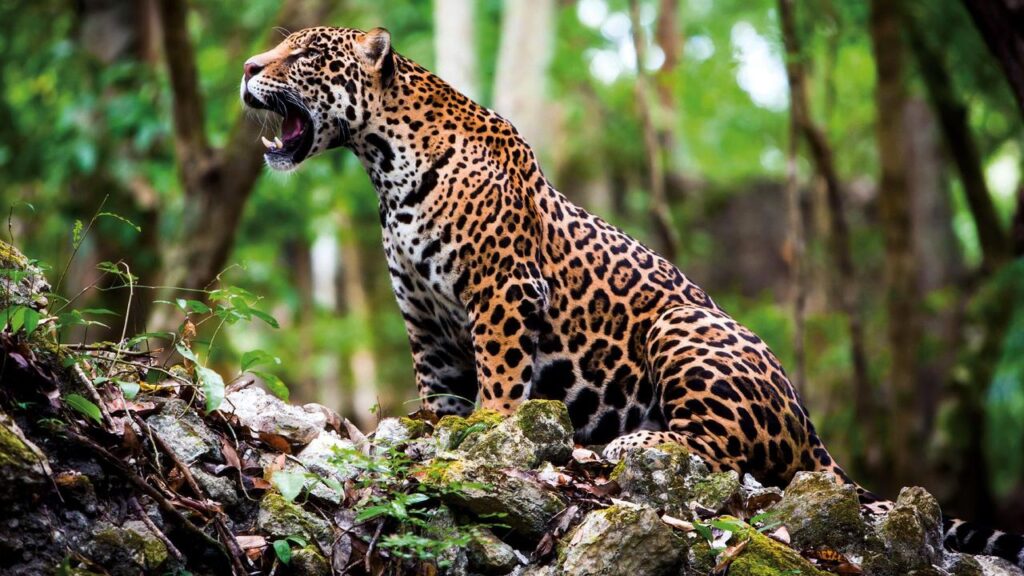
11. Mexico is home to jaguars.
The Yucatan Peninsula is the stomping ground of the magnificent jaguar, the largest wild cat in North America. Revered as sacred by the ancient Maya, these elusive creatures still prowl the jungles today. So, if you’re taking a dip in a cenote near Tulum, keep your eyes peeled! (*Local guides even warn against eating tuna – those big cats have a nose for it!). While jaguars generally avoid humans, it’s best to be cautious and admire them from a safe distance. And if you’re driving around the area, watch out for road signs with a jaguar on them – it means they might be crossing, so yield to these spotted beauties.

12. Mexico’s national dog is the unique and ancient Xoloitzcuintli.
Often shortened to “Xolo” (pronounced as “Sholo”), this breed is also known as the Mexican Hairless Dog. One of the world’s oldest dog breeds, Xolos are distinctive for their lack of fur and variety of sizes. They’re also known for being relatively quiet, rarely barking. The Aztecs held these dogs sacred, believing they guided souls to the afterlife.
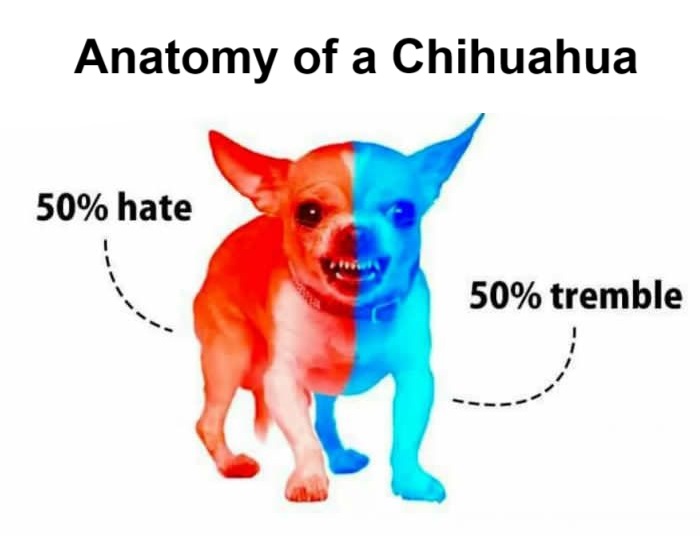
13. The world’s smallest dog also hails from Mexico.
The Chihuahua, that pint-sized pup that holds the title of world’s smallest dog breed, actually originated in the northern Mexican state of Chihuahua, which is how it got its name. It’s believed that Chihuahuas are descendants of the Techichi, an ancient breed of small, quiet dogs that kept the Toltecs company.
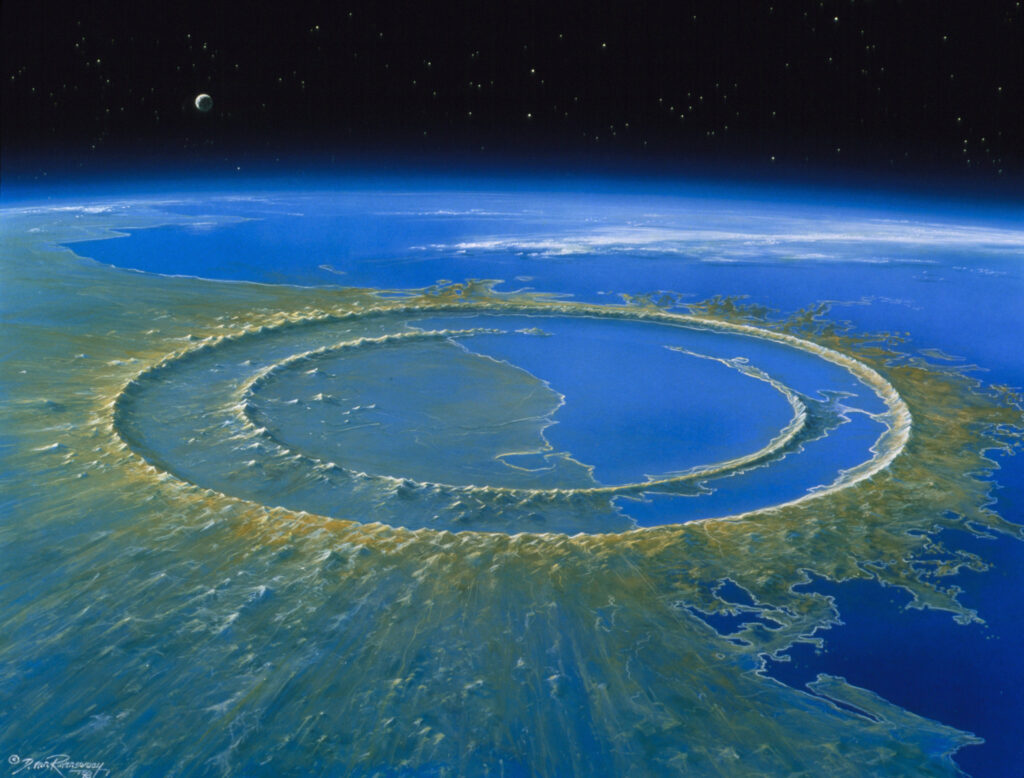
14. The asteroid that wiped out the dinosaurs* struck Mexico.
The colossal asteroid that drastically changed Earth’s climate (*and is widely believed to have caused the extinction of the dinosaurs) 66 million years ago, made its devastating impact on Mexico’s Yucatan Peninsula. The exact impact site is now home to the unassuming beach town of Chicxulub, located on the Gulf of Mexico. It wasn’t until 1981 that workers from Mexico’s state-owned oil company, PEMEX, stumbled upon the massive crater (spanning 112 miles/180 kms in diameter) while drilling for oil.

15. The Yucatan’s name has a bit of a comical origin story.
A pretty cool fact about Mexico is how the Yucatan peninsula came to be named. Legend has it that when the Spanish arrived on the peninsula, they asked the Maya inhabitants what the land was called. The Maya, perhaps a bit bewildered by these newcomers, replied with “Ma’anaatik ka t’ann,” which means something along the lines of “We don’t understand you” in the Mayan language. The Spanish, apparently mistaking this for the actual name, dubbed the region “Yucatan.”
Another theory suggests the name stems from the Aztec word “Yocatlan,” meaning “place of riches.”
Take your pick on which fun fact (or legend) about Mexico to believe!
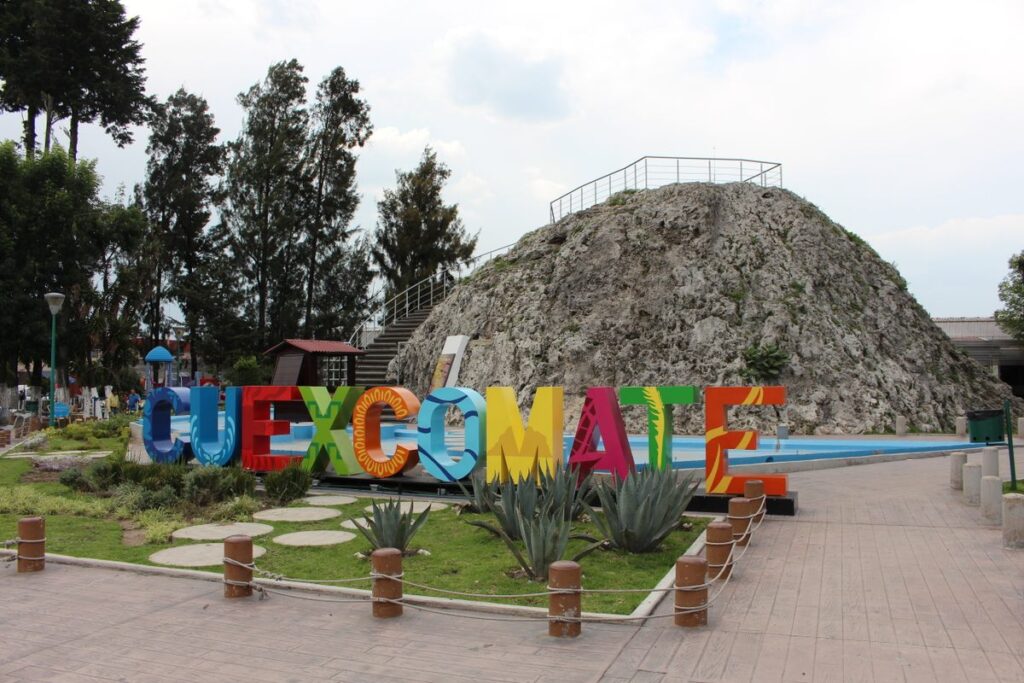
16. Mexico is home to the world’s smallest volcano.*
Near the city of Puebla, you’ll find Cuexcomate, the world’s tiniest volcano* (*technically, it’s an inactive geyser, but it’s still pretty cool!). This little wonder stands just 13 meters tall and has a diameter of 23 meters. It’s a rather unique natural formation that’s definitely worth checking out!
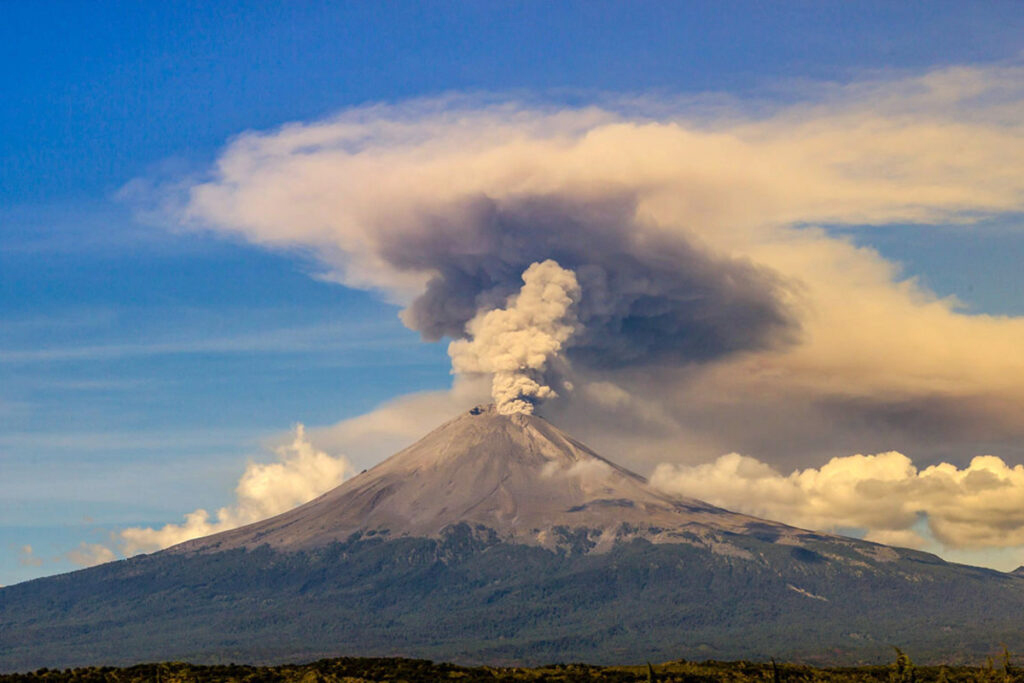
17. Mexico is a land of volcanoes, with 48 active ones and thousands more lying dormant.
The country sits squarely within the “Ring of Fire,” a horseshoe-shaped zone of intense seismic activity that encircles the Pacific Ocean. This rather volatile region is home to a whopping 75% of the world’s volcanoes and experiences 90% of all earthquakes.
*Fun fact: In the mountainous areas around Mexico’s volcanoes, you might spot the rare volcano rabbit, also called a zacatuche or teporingo. Surprisingly, this tiny, gray-brown creature is only about 30 cm long and weighs up to 600 grams.
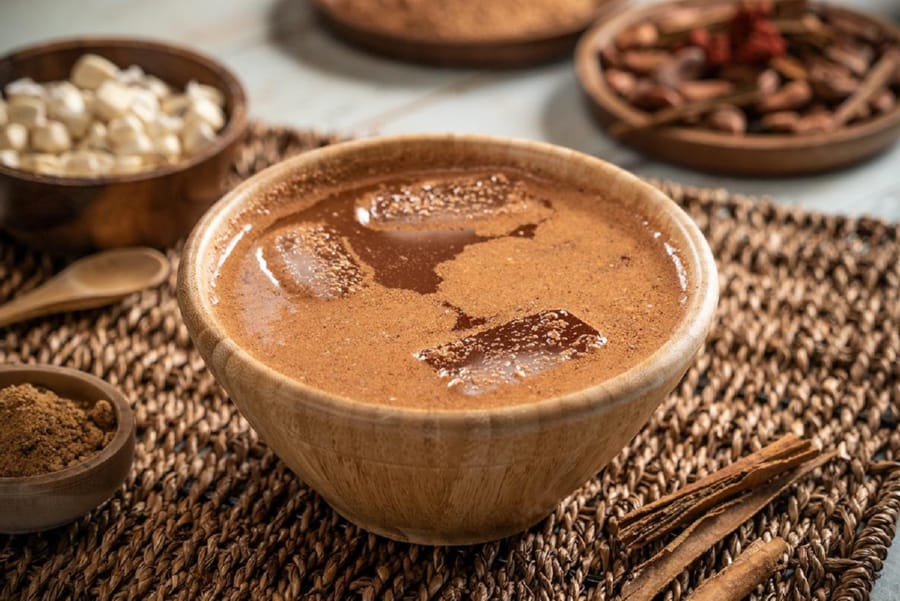
18. Chocolate was born in Mexico.
When people think of chocolate, they often think of Switzerland, but here’s a little-known interesting fact about Mexico: Ancient Mexican civilizations like the Olmecs, Aztecs, Toltecs, and Maya were cultivating cacao trees over 3,000 years ago! The very word “chocolate” stems from the Nahuatl word “xocolatl.” Back then, Mexicans enjoyed it as a drink, but cacao beans also served as valuable currency, often prized even more than gold.
Today, you can still savor traditional pre-Columbian chocolate beverages like atole and tascalate in various parts of Mexico. And in Oaxaca, don’t miss out on tejate, also known as the “drink of the gods.”
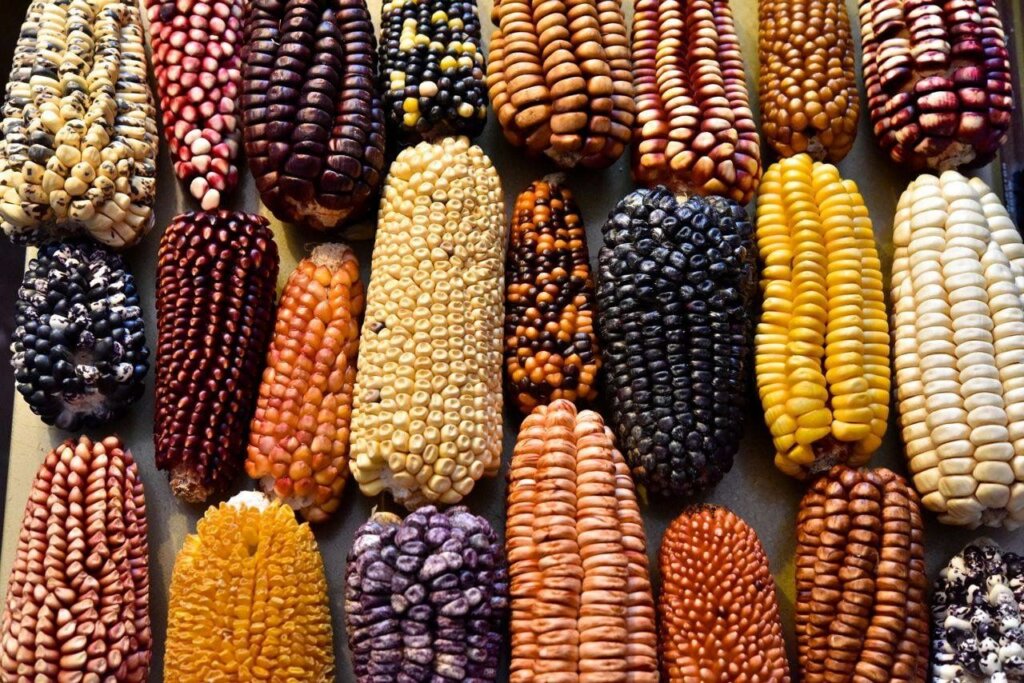
19. Mexico is a corn lover’s paradise, with 59 varieties to savor.
Mexican farmers have been cultivating corn, or “maíz” as it’s known locally, for over 5,000 years. Corn significantly shapes the fabric of Mexican life, with Mexican farmers cultivating it for over 5,000 years, influencing its culture, cuisine, and economy like no other country in the world. It’s a staple food that has nourished generations and continues to be a cornerstone of traditional Mexican dishes. With 59 native varieties, ranging from vibrant reds and blues to earthy greens and whites, Mexico’s corn is as diverse as it is delicious. All these varieties descend from the wild teosinte plant, a testament to the long history of corn cultivation in the region.
For the ancient Maya, corn was more than just food. It was sacred, believed to be the very substance from which God created humans. The “Maize God” held a place of honor in their pantheon, reflecting the profound spiritual connection they had with this vital crop.
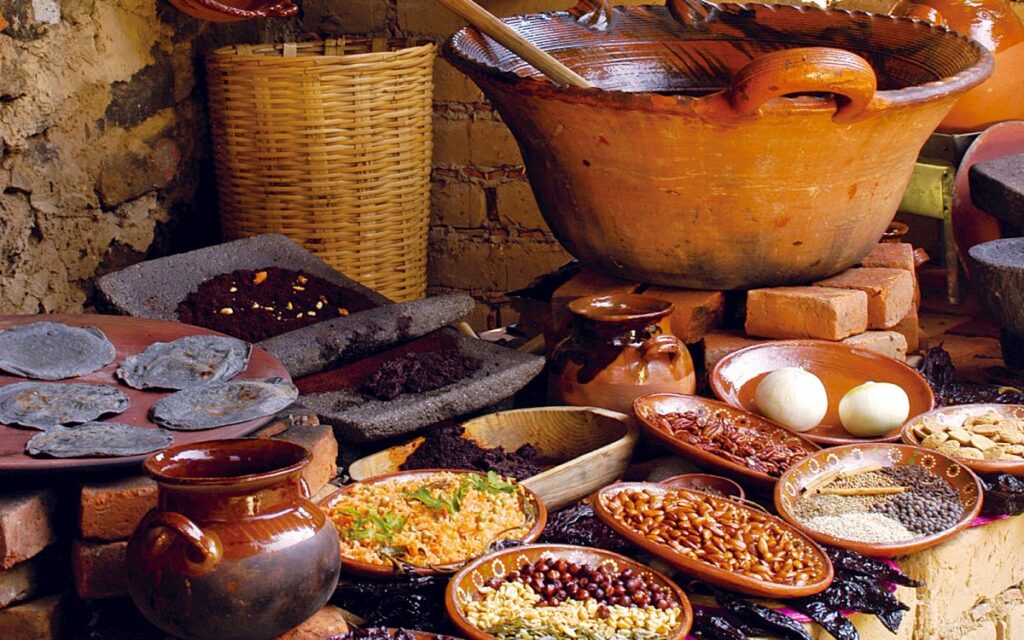
20. Mexican cuisine is a UNESCO treasure.
In 2010, UNESCO recognized the incredible value of Mexican cuisine by declaring it an “intangible cultural heritage of humanity.” This means that traditional Mexican food isn’t just delicious, it’s a vital part of human culture! Only three countries in the world hold this prestigious culinary title: Mexico, Japan, and France.
The decision was largely influenced by the authentic and ancient culinary traditions of the Mexican state of Michoacán, home to dishes like sopa tarasca, chongos zamoranos, tortitas de charal, and capirotada. Mexican gastronomy is built on a foundation of three essential ingredients: corn, beans, and chili peppers. Of course, let’s not forget the mouthwatering additions of meat and chocolate!
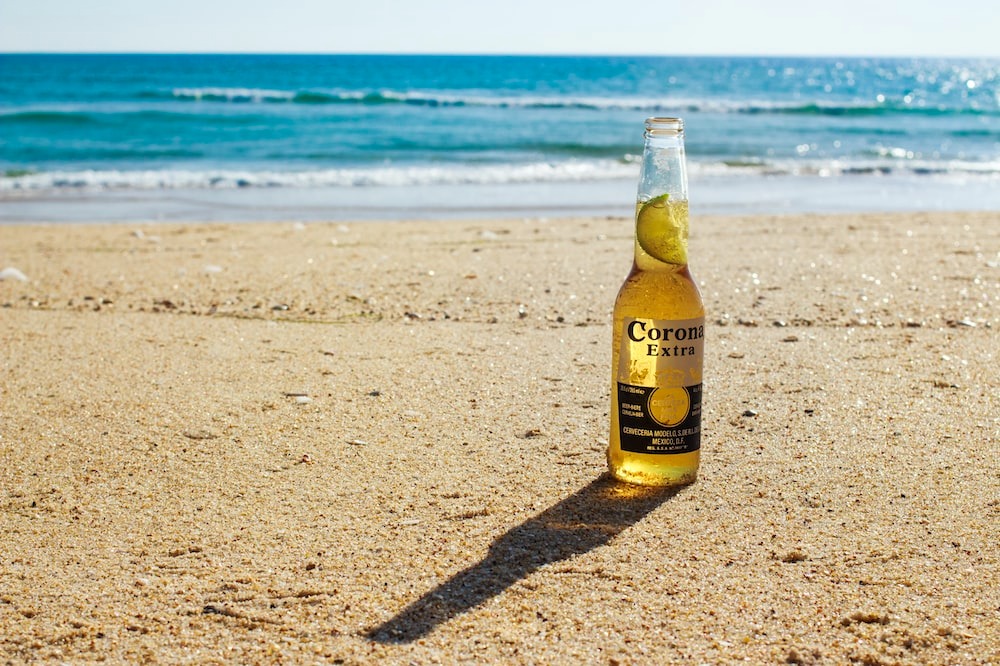
21. Mexico is the world’s reigning beer champion.
Surprisingly outpacing beer powerhouses like Belgium, Germany, and the Netherlands, Mexico, is the top global exporter of beer. For beer lovers, perhaps this is the most interesting fact about Mexico! In 2021, the country shipped out a staggering 4.2 billion liters of beer, an 11.5% jump from the previous year. It helps that Mexico is a major barley producer, giving them a homegrown advantage in the brewing game.
When it comes to the most popular Mexican beer, Corona is the undisputed king, ranking among the top five most consumed beers worldwide and gracing shelves in over 150 countries. But don’t stop there! Mexico has a whole host of other delicious brews waiting to be discovered, including Dos Equis (XX), Modelo, Sol, Pacifico, Indio, Tecate, Victoria, Bohemia, and Carta Blanca.
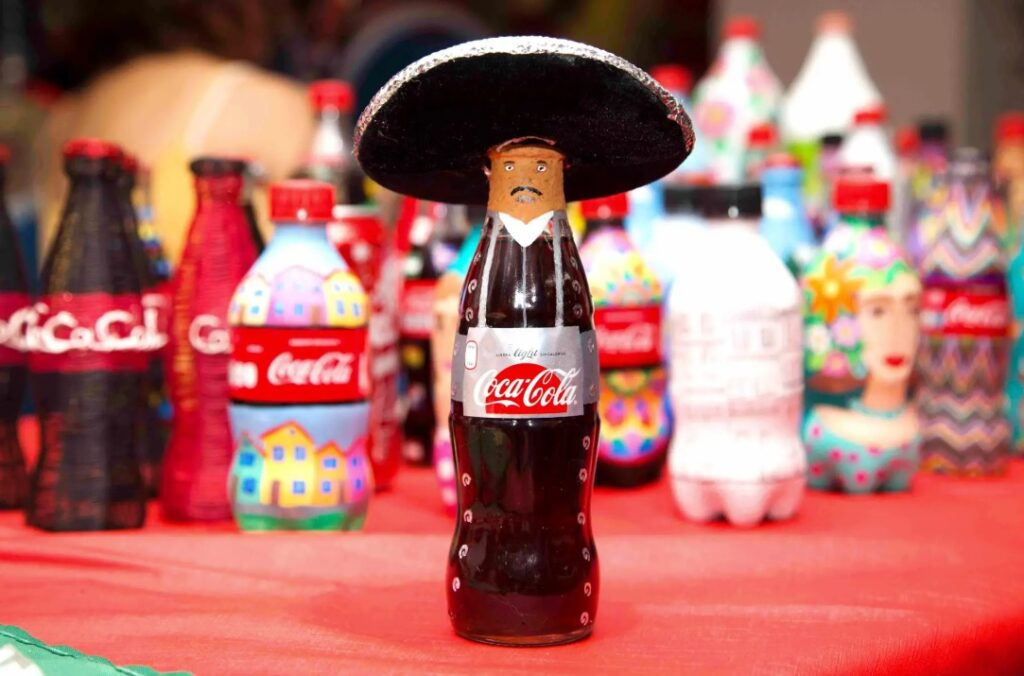
22. Mexico is the world’s biggest Coca-Cola fan.
In Mexico, Coca-Cola isn’t just a drink; it’s practically a cultural institution, so popular that some parents even recommend it to their kids when they’re feeling under the weather.
*Authors’ note: While this might sound surprising, there’s actually some truth to it. Coca-Cola, particularly when flat, can help settle an upset stomach and combat dehydration from stomach bugs or food poisoning. It’s not a cure-all, and definitely not a substitute for proper medical care, but it can offer some relief in a pinch. Even doctors in Europe sometimes recommend it for similar reasons. We’ve tried it ourselves when nothing else seemed to work, and surprisingly, it did the trick. So, if you find yourself in the middle of nowhere with an upset stomach, a flat Coke might just be your saving grace. But remember, moderation is key, as Coke contains a lot of sugar and calories!
Mexicans emphatically have an obsession with Coca-Cola, consuming 163 liters per person per year – about 500ml a day! In some southern states like Chiapas, it’s even higher, reaching a staggering 2.2 liters per day. Unquestionably, this soda addiction contributes to health problems like obesity and diabetes. Mexico has the second-highest rate of overweight people worldwide, trailing only the U.S., and experts often blame excessive soda consumption.
But finally, the government is starting to take action. In Oaxaca, for instance, kids may no longer buy soda on their own.
*Fun fact: Coca-Cola is so ingrained in Mexican culture, it’s even found its way into a unique religious ceremony in a church in Chiapas, playfully dubbed the “Coca-Cola Church.” At the San Juan Bautista Church in San Juan Chamula, a fascinating blend of Catholicism and Tzotzil Maya traditions is practiced. Here, Coca-Cola serves not only as a colorful decoration but also plays a role in religious rituals. Parishioners believe that burping, often induced by drinking Coke, helps expel evil spirits from the body and soul.
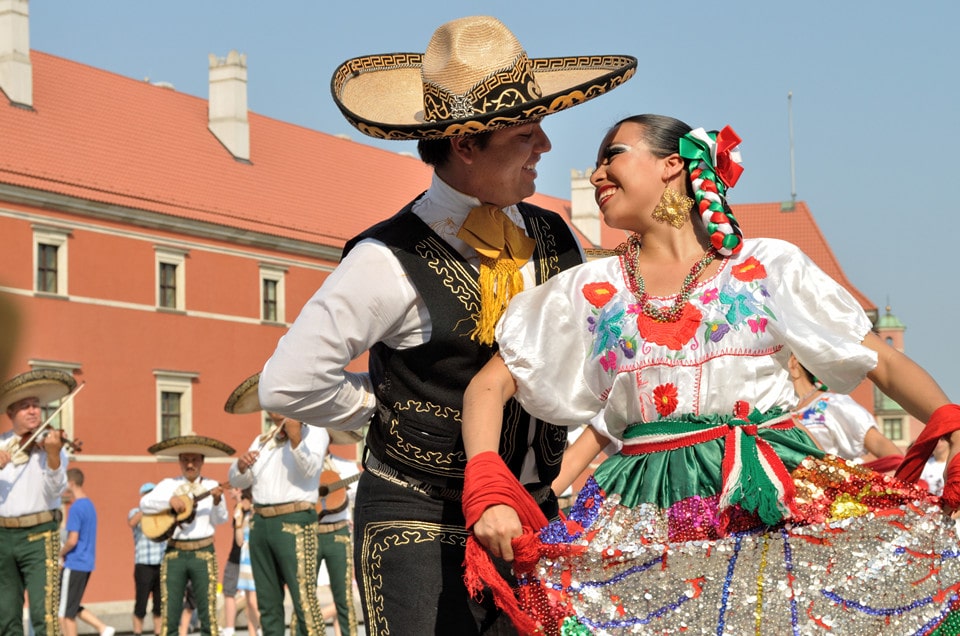
*Bonus: Mexico is a happy place filled with happy people.
The 2019 Happy Planet Index ranked Mexicans as the 23rd happiest folks on the planet (versus the U.S. at 122/152). And from our own experience, we can definitely vouch for that! Mexicans are some of the warmest, friendliest people you’ll ever meet 😊.
From ancient civilizations and natural wonders to a vibrant culture and delicious cuisine, these interesting facts about Mexico reveal a country that’s as diverse as it is captivating. Whether you’re exploring ancient ruins, swimming in a cenote, or savoring a traditional dish, Mexico offers a unique and unforgettable experience. So, what are you waiting for? ¡Vamos a México!
And if you’re craving those picture-perfect beaches and sparkling turquoise waters, Cancun and Isla Mujeres are ready to deliver the sunshine and good times!

